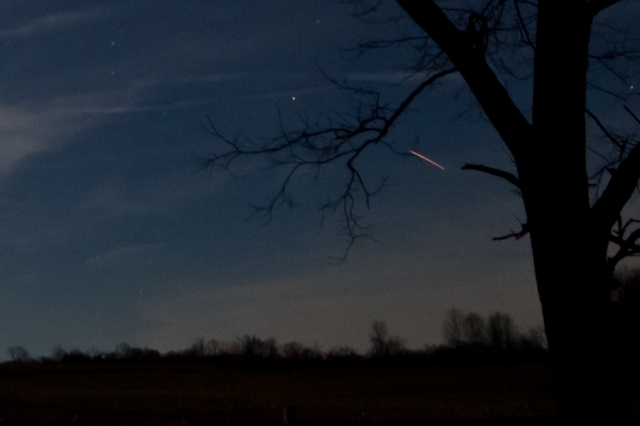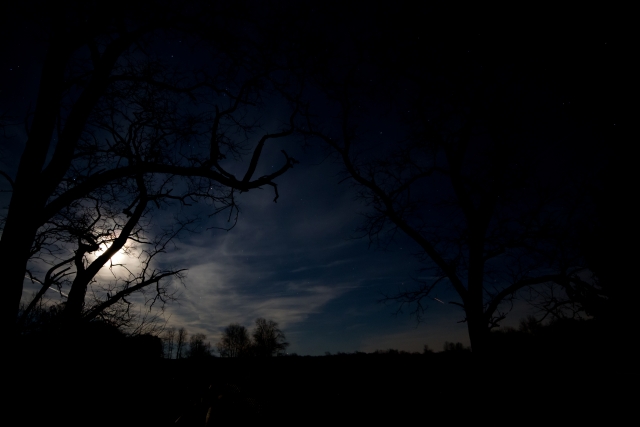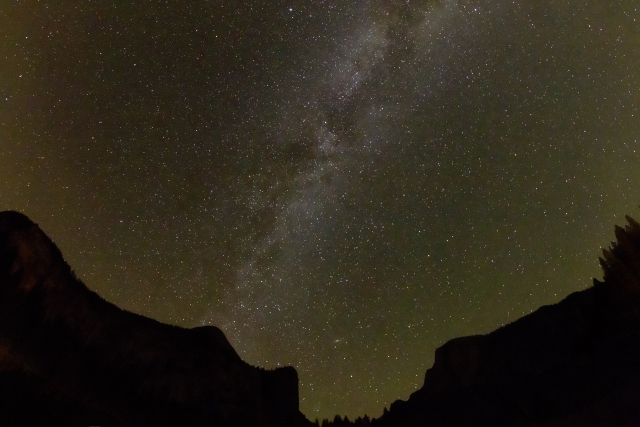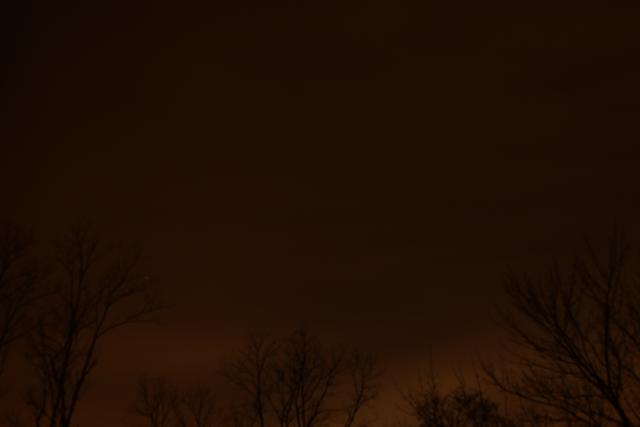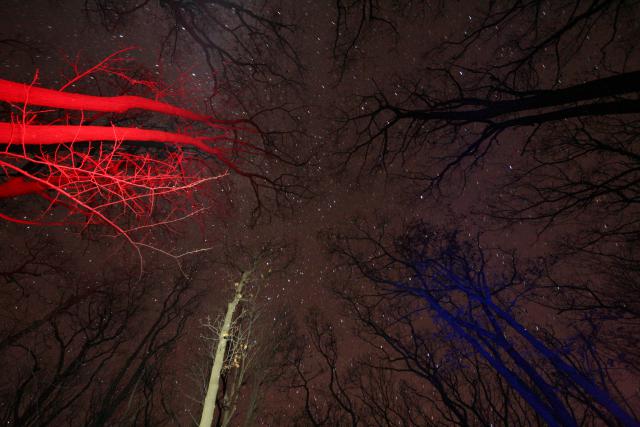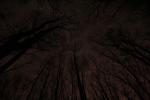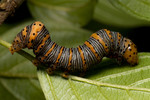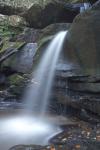stars
Attempt at Perseid Time-lapse
ktuli — Mon, 08/17/2015 - 11:54
So I made several attempts at capturing a time-lapse video of the recent Perseid meteor shower. I don't think the meteors show up in the video (the streaks you see shoot across the sky are airplanes), but you do get to see the Milky Way move across the sky...
I've posted it to both Vimeo (above) and Youtube (below) to try and figure out which rendering I like better.
- Bill
ORS-3 Rocket Launch (redone)
ktuli — Thu, 11/21/2013 - 07:54
Ok - as promised, here is a brighter version of the photos from the other night with the ORS-3 Rocket Launch. Mouseover each image in the sequence and you will get to see a bit of how it looked to have the rocket move across the sky (I was trying to figure out how to make it cycle automatically, but don't have the time to do so right now).
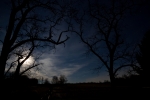 |
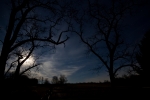 |
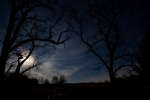 |
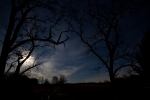 |
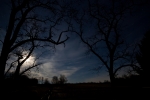 |
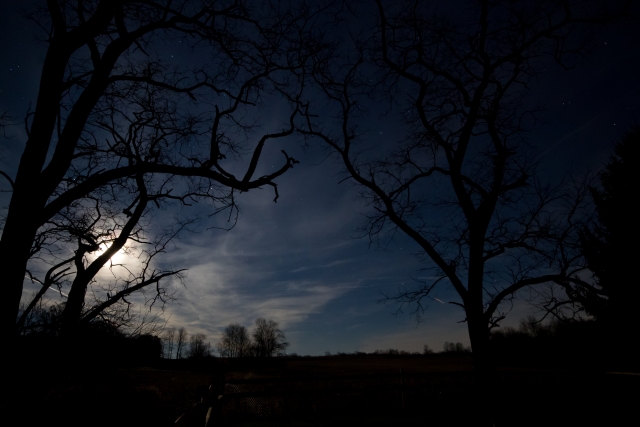 |
||||
Technical Data: Canon EOS 7D, Sigma 10-20mm f/4-5.6 EX DC HSM AF at 13mm, 15 sec at f/8. ISO 1250. Raw conversion Adobe Camera Raw.
And in case you are having a hard time finding it, here is a 66% crop to show the rocket a bit more magnified...
Thanks for stopping by!
- Bill
ORS-3 Rocket Launch
ktuli — Wed, 11/20/2013 - 07:35
So thanks to my father-in-law, I got some last minute notice that there was a rocket launch scheduled to take place from Virginia and would be visible along the east coast. Since we had a clear night, I figured it was worth seeing what I could capture with the camera.
I think I might have to reprocess these photos as looking at them again, they look like I processed them a bit dark (I was in the middle of a migraine at the time, so you'll have to give me a pass).
Anyway, here's the first attempt at it - I'll see if I can get a better cleaned up version later.
Technical Data: Canon EOS 7D, Sigma 10-20mm f/4-5.6 EX DC HSM AF at 13mm, 15 sec at f/8. ISO 1250. Raw conversion Adobe Camera Raw.
I know it is hard to see, but the rocket is a tiny orangish streak to the left of the tree on the right hand side of the image.
- Bill
California Trip: Yosemite National Park (part 4)
ktuli — Sat, 09/22/2012 - 20:54
And to wrap up (at least for now, I might revisit some of the photos in the set in the future), here is a set of night photography in Yosemite.
 |
 |
 |
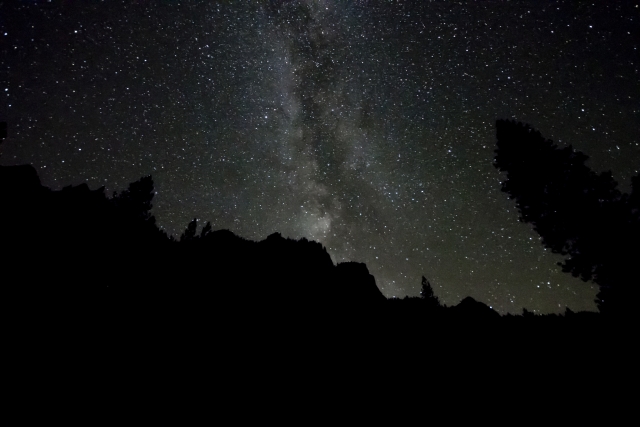 |
||
If the one looks familiar, it is the same photo I used as a sneak peak, but I've gone ahead and fixed the yellow color cast that was showing up to light pollution.
- Bill
California Trip: Yosemite National Park (part 3)
ktuli — Thu, 09/20/2012 - 19:06
This photo is one that I am really pleased with how it turned out. Our last night in Yosemite, we stopped at Tunnel View (remember that from the other day?) and I took some last photos of the valley with the Milky Way above (more on those later).
As I turned around to head back to the car, I saw this scene and knew it would make for an interesting image. Well - to be honest, I didn't see it exactly like this - that would have been impossible. Instead, I was able to visualize how an extended exposure would make the tunnel look against the dark sky. I knew that the exposure time I would need to make the sky visible would cause the lights inside the tunnel to over-expose or "blow out".
The scene ended up looking almost exactly like I expected it to... and when I look at it, it has a very primordial feel to it - almost like that cave contains a burning fire like a volcano, ready to spew forth new life. Almost like Middle Earth existed in Yosemite...
Technical Data: Canon EOS 7D, Sigma 10-20mm f/4-5.6 EX DC HSM AF at 10mm, 7 sec at f/4. ISO 12800. Raw conversion Adobe Camera Raw with additional edits in Photoshop CS5.
I'm not normally one for titles on my photos, but something tells me that this one deserves one... I just don't know what would work. Any suggestions?
- Bill
California Trip Sneak Peek
ktuli — Sat, 08/25/2012 - 12:20
Ok - it looks like the photos from this last trip are going to take me a while to process and upload, so I figured I would share a quick sneak peek (or should that be peak) to whet your appetite.
Technical Data: Canon EOS 7D, Sigma 10mm f/2.8 EX DC HSM Fisheye (borrowed), 30 sec at f/4. ISO 12800. Processed in Adobe Camera Raw and Photoshop CS5.
As you can see, I even need to go back and redo this one and get rid of that yellow color cast the sky has picked up (not quite sure where that even came from and how I hadn't noticed it before). But that is just one of the awesome things we got to see on this trip... if you're wondering, that's the Milky Way over Half Dome (the peak on the right side of the center valley).
More to come - albeit slowly more than likely.
- Bill
BG-E7 Battery Grip & Satechi TR-A Timer Remote Control
ktuli — Tue, 12/21/2010 - 21:07
Alright, as promised, I will get to some of the product reviews I've mentioned a few times already. Sorry though, I'm not ready to do my review of the Canon EF 100mm f/2.8L Macro IS USM just yet. So instead, we'll look at the Canon BG-E7 Battery Grip and the Satechi TR-A Timer Remote Control.
 This is actually a little funny... on one hand, I was nervous and apprehensive about buying a non-Canon battery grip (there are plenty of third party options that sell for much cheaper), yet I did end up with a non-Canon timer remote. In both cases, the third party products were roughly half the price, but there was just something about the battery grip, with it being so integrally involved in the power system of the camera that I just couldn't bring myself to trust a non-Canon product. This is something you'll have to debate for yourself I guess.
This is actually a little funny... on one hand, I was nervous and apprehensive about buying a non-Canon battery grip (there are plenty of third party options that sell for much cheaper), yet I did end up with a non-Canon timer remote. In both cases, the third party products were roughly half the price, but there was just something about the battery grip, with it being so integrally involved in the power system of the camera that I just couldn't bring myself to trust a non-Canon product. This is something you'll have to debate for yourself I guess.
Canon BG-E7 Pros: Obviously, you buy this if you want to double your shooting time, and this obviously does that with no question. The connection to the camera is very snug and sturdy (I've seen others - usually third party products - that are a little wobbly), and all functionality is maintained at both shutter triggers with the additional scroll wheel and other buttons. Additionally, once I recover a little camera budget, I'll be able to go pick up the Canon Hand Strap E1 which only works with the battery grip attached.
Canon BG-E7 Cons: Aside from the price, my biggest gripe with this grip is the fact that the button feels different than the main shutter button. Why not make them feel identical in your hand? My hand has gotten used to 7D's button placement, why would a Canon product not replicate that identically? Also, like other third party grips, it has a separate on/off switch to activate/deactivate the additional buttons - why not use the camera's orientation to do that? The camera can automatically rotate my photos based on camera orientation, why not this?
The grip adds a good deal of weight to the camera too, but I'm not going to complain about that - I knew it would before buying it. And except for the feel in my hand, the cons are pretty minor - if you have a need for a longer battery life, it is worth it (just make sure you have plenty of battery packs to fill it - it doesn't come with any extras).
The photo above was from my attempt to capture the recent total lunar eclipse for a timelapse video. Unfortunately, I was unable to properly predict where the moon's path would take it, so the best I got was some orange clouds. However, the exercise was worthwhile to practice the use of anintervalometer.
 I purchased this Satechi TR-A Timer Remote Control back in May, and haven't really done much to use it to its fullest potential. Before this, I had just been using it as a remote shutter release (very very handy for detailed macro and long exposure work).
I purchased this Satechi TR-A Timer Remote Control back in May, and haven't really done much to use it to its fullest potential. Before this, I had just been using it as a remote shutter release (very very handy for detailed macro and long exposure work).
But this remote also has the timer function that is very powerful. I can set any combination of the following:
o Delay before starting exposures
o Bulb exposure time (useful for exposures over 30 seconds)
o Interval between exposures
o Number of exposures (including infinity or basically until the battery runs out on something)
o Audible countdown beep warning (for the last 3 seconds before exposure)
So for example, last night, I set the timer around 10:30PM. I set a 1.5 hour delay at the beginning so my exposures wouldn't start till midnight. Then I had the remote do 30 second exposures every 2 minutes, set to infinity so I manually stopped the cycle in the morning when I woke up. Had I properly pointed my camera, I would have had 210 exposures of the night's lunar eclipse. Instead, I got 210 exposures of clouds.
Satechi TR-A Pros: Obviously, the price is much nicer than Canon's TC-80N3 ($60 versus $150), and from what I have read it does every feature that the Canon trigger does. The interface is simple to use, and as long as you slow down and think about what you actually want to do, is very easy to setup (I read multiple reviews of people getting confused with the setup, but I think they just were getting confused and didn't understand the manual's instructions). Lastly, the trigger works perfectly as a wired remote without needing to have batteries installed - great for saving battery life and not keeping the batteries installed in the unit!
Satechi TR-A Cons: Honestly, I read every single review of this product I could before committing to buying it, and I can only agree with a couple of the cons people found with this product. First, the backlight really does turn off far too quickly. It would be nice if the backlight had a lock-on function to make programming the remote in the dark much easier. Also, there is a red light that flashes while the camera is making an exposure - honestly, I see two things wrong with this: (1) it uses battery life and (2) depending on where you set the remote, could get picked up in your exposure. I like the option to have the flashing light, but give me the option to turn it off too.
All in all, again, we're looking at very minor cons that are far outweighed by the pros of these products. Both products are items that you might normally overlook as valuable to your photography, but once you have them, I think you really see the value in them.
I can't stress enough the value of the remote shutter release - and I'll argue the debate with anyone who wants to claim that a timer delay function on the camera is good enough. I know the battery grip is more of a luxury item, but a remote shutter release really should be part of every serious photographer's kit (whether it is a intervalometer model or not).
Well, I hope you enjoyed the double product review today, I know it got a little long, but they linked together for this recent project (even if I didn't get my eclipse timelapse like I wanted!) so I thought it worked well to review both together.
Stay tuned. I still owe you folks the lens review, and I know folks are waiting for the Christmas TTV (you didn't think I'd pass up a chance to get some more TTV in, did you?).
- Bill
More Light Painting
ktuli — Tue, 11/09/2010 - 19:06
All that beautiful night photography in those time-lapse videos had me thinking about this old set of photos. So far, I've shared the award winning black and white stars and trees as well as the light painted adirondack.
I am usually impressed by night photography, and quite often enjoy looking at the Astronomy Picture of the Day (APOD) when they share night photography.
Anyway, this one combined night photography and light painting...
Technical Data: Canon EOS Digital Rebel XT, Sigma 10-20mm f/4-5.6 EX DC HSM AF at 10mm, Unknown manual exposure length as f/5.6, ISO 1600. Laurel Highlands Hiking Trail.
Hopefully these multiple motivations will get me out there to capture some new night photos and maybe some more light painting.
- Bill
Black & White & Bronze
ktuli — Fri, 07/02/2010 - 21:30
I've been waiting to post this photo for some time now, and actually, I've had this reason for a while but have just had a couple sets of photos (Kanawha 1, 2, 3, 4, 5, 6, 7, 8, 9 and Cozumel 1, 2, 3, 4, 5, 6) that I wanted to post all in a row.
Over a month ago, the Photographic Section had their year end awards dinner. I actually didn't even attend (being a new member I don't know too many people in the club and wasn't sure of what the dealie was with the dinner)and had completely forgotten that I had two photos that had received honorable mention in the previous in-house competitions and qualified for the 2009-2010 Year End Compeition that is judged by external judges.
This photo received a bronze medal for the Monochrome Projected Digital Image portion of the competition...
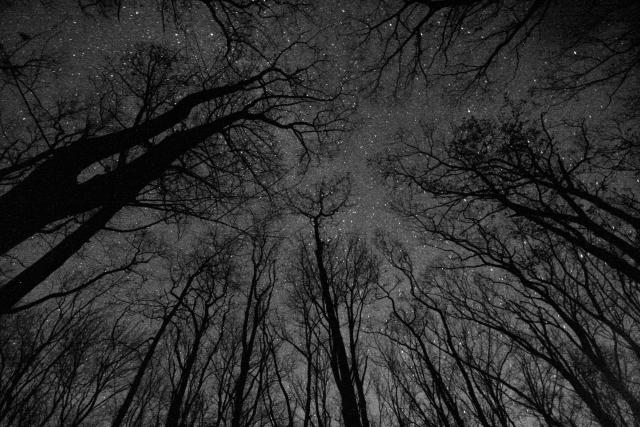
Technical Data: Canon EOS Digital Rebel XT, Sigma 10-20mm f/4-5.6 EX DC HSM AF at 10mm, Unknown manual exposure length as f/5.6, ISO 1600. Converted to B&W and slightly brightened in Photoshop Elements. Laurel Highlands Hiking Trail.
Why This Photo: I took this photo on a hiking trip along the LHHT with some friends. During the trip, I also tried my hand at some light painting, and this was also my first attempt at astrophotography. I really liked the idea of capturing the feeling of looking up at the stars through the trees.
What Works: I liked the shapes of the trees with the starry sky as the background. The curved edges provided by the lens zoomed to 10mm adds a nice additional feel to the size of the trees from that angle.
What Doesn't Work: The thicker tree on the left is a bit distracting, and I wish I could have found a slightly larger opening in the trees for more unbroken star field.
What do you think? The original image is linked to the right. You can see the purplish tinge the sky had from near-by light pollution that I removed in photoshop.
Leave me a comment and let me know if you think this is really a bronze medal winning photo or not.
- Bill
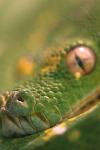
PS: This photo also received an additional honorable mention at the year-end competition, but has already been previously discussed when it got the honorable mention in the in-house judging, so if you're interested click on the photo and read that discussion as well.

